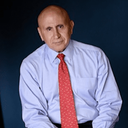Hi, if you are concerned you should follow up with your Lip Augmentation Surgeon. The challenge with cleft lip/palate patients is the possible lack of muscle volume in the lips themselves. This then makes it far more challenging to augment the lips using any augmentation method. I have performed many facial shaping procedures using dermal fillers, facial implants (cheek, chin), liposuction and/or facelifts for over 30 years. In my experience and despite its recent increase in popularity, fat transfer (fat injection) offers "far" less of a reliable and predictable volume for facial shaping than an off the shelf dermal filler or silastic facial implant. For that reason, I do not use fat to shape the cheeks, chin, lips or jaw line. Tissue physiology is quite simple. Tissue requires a blood supply in and out as well as lymphatic connections to remain viable and alive. Once fat is removed from the body all of these things have been disrupted. Just because the removed fat is mixed with PRP or something else doesn't make the blood and lymphatics magically re-appear. The fat at that point is not living tissue which means that it's prone to being dissolved by the body (most likely in an uneven and unpredictable manner). Injecting fat back into the face does not create the required elements to make the fat living tissue once again. So the argument that fat is alive and viable in the face once it's been removed and re-injected makes no sense to me as a physician and surgeon.

